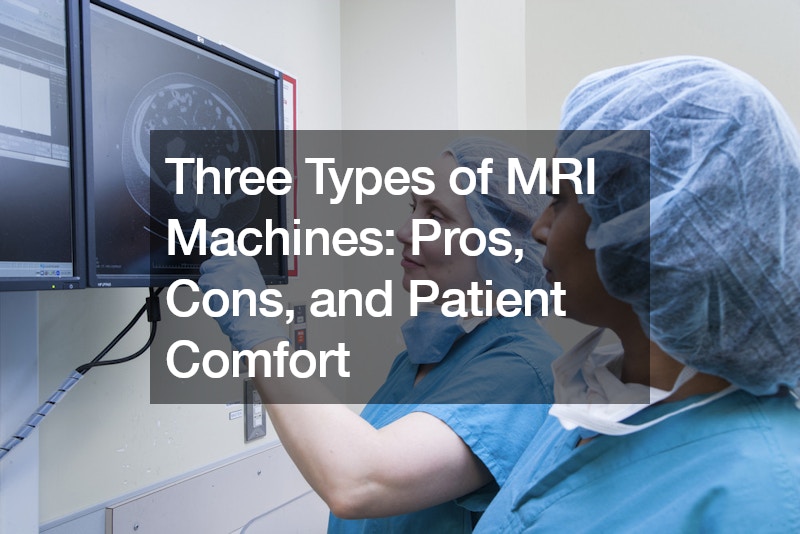Magnetic Resonance Imaging (MRI) is a powerful tool used by doctors to diagnose and monitor various medical conditions. However, not all MRI machines are the same. There are three main types of MRI machines: closed bore MRI, open bore MRI, and upright MRI. Each type has its own pros and cons, especially when it comes to patient comfort.
Understanding these differences can help you make an informed decision if you ever need an MRI scan.
Closed Bore MRI
The closed bore MRI is the most common type of MRI machine. It has a tube-like structure where the patient lies down on a table that slides into the machine. This type of MRI machine is known for its high field strength, typically ranging from 1.5 to 3.0 Tesla, which allows for very detailed and high-quality images. This makes it a preferred choice for diagnosing complex conditions.
However, the closed bore MRI can be uncomfortable for some patients. The confined space can cause feelings of claustrophobia, and the loud noises produced by the machine can be unsettling. Additionally, it might be challenging for children or obese patients to fit comfortably inside the narrow tube.
Despite these drawbacks, the closed bore MRI remains popular due to its superior image quality. It’s often used when detailed images are crucial for accurate diagnosis and treatment planning.
Open Bore MRI
The open bore MRI was developed to address the discomfort associated with the closed bore MRI. This type of machine is open on three sides, making it more spacious and less intimidating for patients. It’s especially beneficial for children, obese patients, and those who suffer from claustrophobia.
While the open bore MRI provides greater patient comfort, it typically has a lower field strength compared to closed bore machines. Most open bore MRIs operate at around 0.3 Tesla, which can result in less detailed images. Some radiologists might hesitate to use open bore MRIs for complex diagnoses due to concerns about image clarity.
Despite these limitations, the open bore MRI is a valuable option for patients who might otherwise avoid getting an MRI due to fear or discomfort. Many clinics use open bore MRIs as a backup system for their more powerful closed bore machines.
Upright MRI
The upright MRI is a unique type of machine that allows patients to be scanned while standing or sitting. This can be particularly useful for diagnosing conditions that are affected by posture or weight-bearing, such as spinal issues. The upright MRI is also a good option for patients who cannot lie down comfortably due to pain or other medical conditions.
Like the open bore MRI, the upright MRI tends to have a lower field strength, which can affect image quality. However, it offers the distinct advantage of allowing scans in different positions, which can provide additional diagnostic information that cannot be obtained from a traditional lying-down scan.
Patient comfort is a significant benefit of the upright MRI. The open design eliminates the confined feeling associated with closed bore MRIs, and patients can often watch TV or read during the scan, making the experience more pleasant.
Conclusion
Choosing the right type of MRI machine depends on several factors, including the need for detailed images, patient comfort, and specific medical conditions. The closed bore MRI is ideal for high-quality imaging but can be uncomfortable for some patients. The open bore MRI offers a more comfortable experience but may sacrifice some image clarity. The upright MRI provides a unique scanning option that can be especially useful for certain diagnoses and offers the highest level of patient comfort.
Ultimately, the choice of MRI machine should be based on a balance between the need for detailed imaging and the patient’s comfort and ability to undergo the scan. Understanding the pros and cons of each type of MRI can help you and your doctor make the best decision for your health needs.
.


